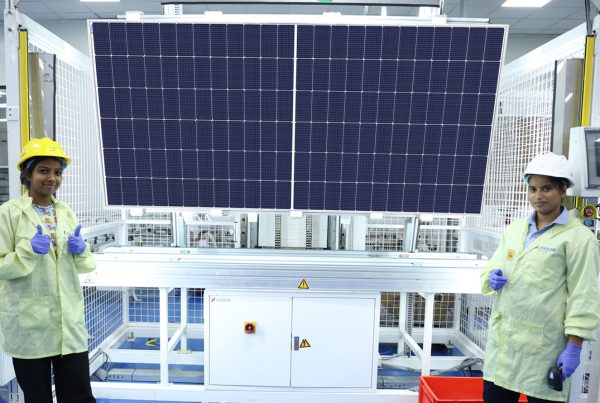The Government of India recently announced an ambitious plan to develop 10 GW Gigawatt (GW) of floating solar capacity in the country over the next three years till 2020-21. Soon after, the Solar Energy Corporation of India (SECI), India’s central public sector undertaking responsible for implementing renewable energy schemes in the country floated an expression of interest (EoI) from project developers to develop 10 GW of floating solar capacity. The objective of this EOI was to understand the feasibility of developing large scale floating solar PV capacities across the country. While the industry has praised the intent of the government and been forthcoming with its suggestions, the common view is that a target is highly ambitious and multiple challenges need to be addressed considering current technology and costs.
Global Scenario
Floating Solar PV Plant is an emerging installation technology trend which is at a nascent stage globally. The technology was first put to trial by research agencies in Europe and the US with installations of a few kilowatts. The objective was to develop proof of concepts and develop a viable version for large scale adoption in the future. This period lasted between the years 2008 to 2014.
As technology progressed, the first set of large scale floating solar PV installations came up globally post 2014. In a short span of three years, the total global installed capacity grew from a mere 5 MW to 250 MW with a forecasted growth of up to 750 MW by end of 2018. (Source: Wikipedia)
The current largest solar floating plant is located in China with an installed capacity of 40 MW. This plant was commissioned in the year 2017 and took on this title after displacing a similar installation of 6.3MW in London’s Elizabeth Reservoir in UK.
Advantages of Floating Solar PV Plants
One of the primary reasons for the growing popularity of floating solar power plants globally is their non-reliance on large tracts of land for setting up the power plant. In most countries across the world, land is a prized commodity. In island nations like Japan and Indonesia land is scarce. Floating solar power plants can be installed in natural and man-made water bodies like lakes, dam reservoirs, water treatment plants, municipality water storage ponds amongst others.
The other advantages of floating solar plants are:
Higher Efficiency of Panels – The cooling effect of water on the installed PV modules, helps reduce thermal losses which increases the efficiency of panels. Plant operators claim higher efficiencies in the range of 5-16% from floating solar power plants compared to land based PV plants
Longer Module Life – The cooling effect on modules slows down long term heat induced degradation of solar modules thereby leading to higher module and plant life
Water Conservation – Floating solar power plants can help reduce evaporation from water bodies. Since, most solar power plants are installed in inland fresh water bodies, they can help conserve water for human use in urban and arid regions. Some studies have claimed reduced evaporation of water of upto 70% from water bodies with floating solar PV systems
Easy Cleaning & Less Water Consumption – Regular cleaning of solar modules is easier as water is readily available. Also, water loss is lesser as the water used in cleaning the panels goes back into the reservoir.
India
India today is the fastest growing market for renewable energy in the world. The country boasts of an ambitious renewable energy target of 175 GW by 2022 of which solar comprises 100 GW. The country has been making rapid strides in this area. As such, it is evident that floating solar would become a technology for consideration by policy makers in the country.
The first floating solar power plant in India came up in the year 2014 in Kolkata. This 10 KW floating solar plant was funded by the Ministry of New and Renewable Energy (MNRE) as a pilot project in the country. The success of this project led to various other institutions and government bodies consider the installation of floating solar plants atop water bodies. Over the next few years, several small and mid-sized floating solar power plants came up across the country. The current largest installation is a 500 KW plant installed at Banasura Sagar reservoir in Wayanad, Kerala.
Plans are also underway to develop such facilities across the country by state government bodies. Tenders have been issued for developing floating solar across reservoirs in Uttar Pradesh, Maharashtra, West Bengal, Kerala amongst others.
Challenges
While floating solar offers multiple benefits, it has its share of challenges, the most important of them being costs. Installing a floating solar power plant with current technologies requires at least thrice the investments cost compared to land-based solar power plants.
The other challenges include rusting of components from constant contact with water; anchoring the floats to the water body so that they can withstand high velocity winds, strong currents, floods amongst other. Since this is new technology, there are no historical evidences to understand the long term impact of water on plant components like modules, cables, floats etc.
Also, in price sensitive markets like India, where per unit cost of solar energy from land based solar power plants have fallen to INR 2.44 per unit (USD 3-4 cents), adoption of large scale floating solar power projects will remain a big challenge unless technology brings down costs to similar levels.
Local manufacturing of floats in India is another area that will require significant boost to meet such high requirements.
Till the time, solutions do not emerge for these challenges, the 10 GW target looks like a steep challenge.








